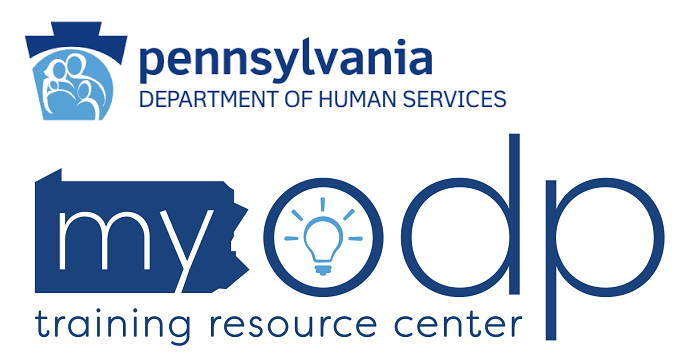Positive Approaches Journal, Volume 8, Issue 2
Lupey, Moran, Leamer | 14-21

Volume 8 ► Issue 2 ► 2019
More Than a Village
Ian Lupey, Heather Moran, and David Leamer
Abstract
A case-study is presented of an individual who lives successfully within numerous community-based social networks, resides in own apartment, independently navigates transportation, works full-time, and enjoys a robust variety of individualized hobbies
and interests. Yet, six years ago, access to these community supports led to an increase in challenging behaviors and more limitations to community integration. An analysis is made to the successful aspects of treatment which is hypothesized
to include: person-centered programming, attention to underlying function of behavior, maximizing natural supports, and ongoing focus on objective measurement of progress.
Success never read the textbook. As professionals in our field, we continue to read and research the latest strategies built on pre-existing data. Those textbooks and peer-reviewed journals outline successful strategies through supporting data and reflect current approaches within the field. Although sometimes under-estimated within the field, the role of natural supports can often be the most integral part of one’s success. A strategy at home may be the only strategy necessary for an adult with Autism Spectrum Disorder (ASD) if implemented by the individual’s parents, but what about a boss at work or the waitress at a favorite diner? This article highlights how one individual’s path to success was influenced by a community of supporters, including individuals who were not part of the immediate treatment team. As numerous researchers have noticed, “One of the most provocative avenues is extending beyond individuals with disabilities and the services system, to understand and impacting larger community itself, this is an exciting frontier” (Novak et al, 2013).
Challenges within the Education System
Leo sought to be like any other person chasing the American dream: working to support himself, living on his own, maintaining a social life, and staying true to his own hobbies and interests. Leo had been diagnosed with Autism at an early age and his parents did not always know what supports were available. During his primary school years, Leo made progress academically, but behavioral challenges became more disruptive. Behaviors of concern included retracing his steps, spending excessive amounts of time washing his hands, over-eating, and other disruptive behaviors that drew attention from peers and the school staff. Even though it may or may not have been the original function of these behaviors, Leo received attention and it strengthened those “problem behaviors.”
After graduating high school, Leo enrolled in higher education. He attempted to complete a bachelor’s degree and found support along the way from various faculty and staff at the university he attended. While in two separate post-secondary educational settings, and with numerous natural and college-based supports, Leo found it impossible to maintain academic and social success. He was frequently distracted and disorganized, misunderstood socially by peer groups, and increasingly feeling a personal sense of anxiety and displeasure with remaining in that setting. His parents did notice; however, he was well liked by some of his peer group, had a very positive influence on many of those around him/roommates and had unwavering support and understanding from many faculty members. Following two unsuccessful attempts as a full-time student, Leo returned home and began employment in his local area in the restaurant and landscape industry.
Life after School
Running low on ideas and still hoping for a life outside of the nest, Leo’s parents helped him to find placement in a residential setting where he could receive support while gaining independence. As a result, Leo began living with several individuals who also presented with a variety of behavioral and other challenges. During this time, Leo began working at a local dining establishment. The team quickly learned this was not an appropriate placement due Leo’s overeating behavior with access to unhealthy foods. Leo was able to secure a position in a different department within the same organization. With these large steps towards independence, Leo and his parents sought out more services: integration, employment, and behavioral supports.
While living with individuals in the residential setting, a new behavior developed as a coping skill: elopement. With the behaviors of his roommates causing him anxiety, Leo developed this behavior to avoid them. Leo would often leave the home without telling anyone and staff was often unable to locate him. This became problematic and resulted in a team unable to provide services. Together, Leo’s team decided that living in this type of residential setting was detrimental to his goals and they began working to find different residential options. A Section 8 apartment with significant rent reduction became available and Leo was determined to give it a try. When Leo moved into his own apartment, the pressure was on for the treatment team.
Individualized Planning
In this new and independent setting, Leo’s team focused their approach on individualized planning, more specifically those supports Leo had naturally acquired: college faculty members, bosses at work, band members, etc. Given Leo’s ability to pair
with these individuals and prior learning history, his team gained insight into how to teach skills across settings. The community members that Leo learned from became “influencers,” both as a result of their leadership roles and personal interest
in Leo’s success. These important individuals were impacted positively by the opportunity to support Leo and play an integral role in his success.
The next step was identifying and addressing the functions of his behaviors. Leo’s team identified two functions that were maintaining the problem behaviors: sensory and attention. It became clear that the initiation of the behaviors was to satisfy a sensory need; however, as a natural consequence, Leo was also obtaining social attention. The team had to carefully select which strategies would be effective to increase appropriate behaviors without reinforcing the problem behaviors that were maintained by attention. Analysis to the function of behavior can be a bit more challenging when working with adults in the community yet remains an imperative step to determining the most effective strategies to implement. “Specifically, practitioners must continue to expand and develop effective functional assessment models to specifically address the unique needs of adult populations and service settings.” (Manente et al, 2010)
Identifying Effective Strategies
Finding effective strategies began with improving motivation. “A meaningful life requires reinforcement that is overarching, intrinsic, and positive.” (Villatte et al, 2016). Lucky for Leo’s team, the most effective reinforcer was always clear: social interaction. Many of Leo’s hobbies of playing instruments, singing, and bowling included a social aspect. Leo’s team, now having grown to include the influencers, used social interaction to not only motivate Leo but to reinforce him for success.
Beyond motivation, the team relied primarily on the prompting hierarchy. When learning a new skill, Leo’s team would use most-to-least prompting to ensure Leo was learning the skill without any errors. Most-to-least prompting would start with
a team member modeling or demonstrating the skill/behavior. Then, the team would use verbal prompts (“Do this first” or “What do you do next?”) and continue to fade to only gestural prompts (the team would point to a task to be done).
Once Leo demonstrated the skill independently, the team would move to least-to-most intrusive (e.g. starting with a gestural prompt and moving up to modeling). This style of prompting allowed Leo many opportunities for independent success.
Maximizing Natural Supports Through Community Integration
If a problem behavior was observed, reinforcement was withheld until the appropriate behavior was displayed; this is part of a more comprehensive instructional strategy known as differential reinforcement. In the case of repetitive/restrictive behaviors (i.e. retracing steps, washing hands, etc.), reinforcement was withheld until the behavior lessened. This style of reinforcement was very effective in strengthening the appropriate behaviors and decreasing the problem behaviors. Once the most effective strategies were identified, Leo’s team implemented them in all settings so the influencers could learn the strategies as intended.
With help from Leo’s team, each influencer learned how strategies were implemented and the rationale. The influencers were quickly reinforced by Leo’s appropriate response to the strategies. For example, when the choir director learned the prompting hierarchy, he did not have to stop a song to prompt Leo; he simply needed to give a gesture. When Leo’s boss learned to acknowledge only the appropriate or alternative behaviors, he noted that Leo was more aligned to the regulations in the work setting. Without exception, each community influencer was easy to approach and very willing to be flexible and make accommodations with relatively little effort. It was important to have Leo's support and participation with each individual and he was a key component to explaining how he needed added support. It is important to identify some relatively minor adaptations prior and go into the meeting with a specific request in mind and indicating that it might only be for limited time-duration.
The team taught Leo new skills including cooking and cleaning through social motivation while he lived independently in his new apartment. The team would remind Leo of the social significance of the skill. For example, to help motivate Leo to keep
his home clean his team would remind him if a girlfriend were to visit, she may not enjoy seeing his apartment with dirty dishes in the sink. Leo continued to engage in repetitive behaviors so his team would remind him it would be rude to keep
his friends waiting. At work, Leo learned new aspects of the job and was able to work with different people in different departments of the facility.
Once these skills were learned and he was fluent, Leo’s team facilitated the social interactions that were highly motivating. The team helped Leo invite peers to his place to watch a movie or play a game and would go as far as offering to drive individuals
to and from his place. Leo was then able to make the connection between having a clean apartment and his peers having a good time. When Leo demonstrated success regulating behaviors in the community, he was naturally reinforced by additional
time he could spend with his friends.
Leo now has a reinforcer day built into his schedule. These reinforcer days include Leo heading into the community to meet up with friends or making new ones at a local coffee shop, bowling alley, or band practice. While at these places and interacting with the community, Leo is able to practice skills with careful supervision from his team and those influencers. Practicing skills across the many settings with many different community members helps Leo strengthen those skills.
Measuring Success
Leo learned many new skills and is still living on his own to this day. However, many of the problem behaviors Leo demonstrated in high school are still present; so how can success be measured? From the beginning, the team, including those influencers, collected data to track Leo’s progress. The frequency data suggested that Leo is retracing fewer steps. The duration data showed staff that Leo was spending less time washing his hands. Leo’s team also took into account that some skills (appropriately portioning out meals) did not occur at a consistent rate, so the measurement had to reflect successes out of opportunities. Based on the results of all the data collected, the team is able to determine that the behaviors are becoming less socially significant.
Leo identifies success as living independently, supporting himself financially, and staying true to his hobbies. Leo has a village of family and support workers who help him every day, but it was outside that village, in those influencers, where
Leo found the most success. Those natural supports continue to be present in every aspect of Leo’s environment and strategies are implemented consistently in all settings. Achieving success will vary with each individual. Success was knocking
on Leo's door and he answered it. Leo's success was achieved through proper motivation and a team including his village and beyond.
References
- Novak, A.A., et al, Social Inclusion and Community Participation of Individuals with Intellectual/Developmental Disabilities. Journal of Intellectual and Developmental Disabilities 2013;51(5)360-375
- Manente, C.J., et al. Effective Behavioral Interventions for Adults on Autism Spectrum: Best Practices in Functional Assessment and Treatment Development. The Behavior Analyst Today, 2010;11(1) 36-43
- Villatte, J.L., et al. Acceptance and Commitment Therapy Modules: Differential Impact on Treatment Processes and Outcomes. Behaviour Research and Therapy. 2016; 77, 52-61




